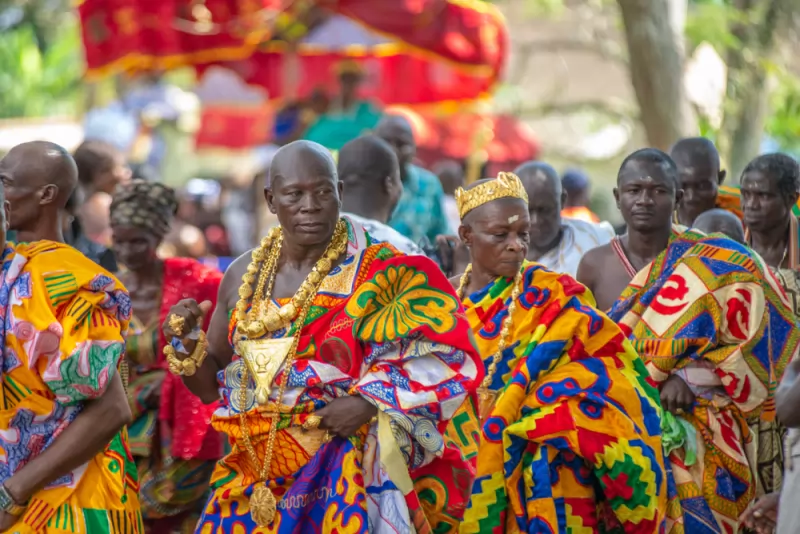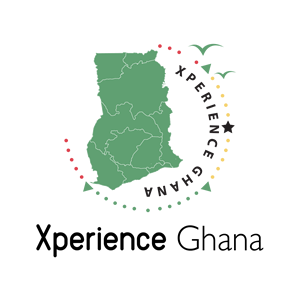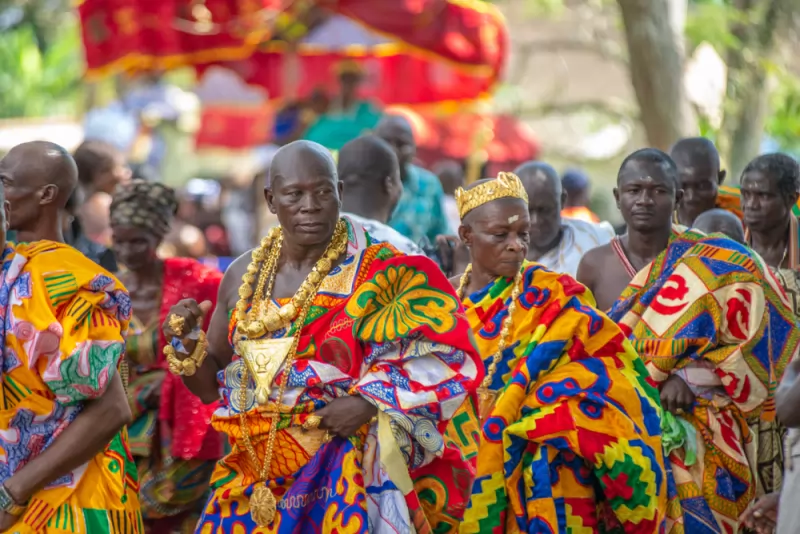The Kundum Festival is one of the most culturally rich and significant festivals celebrated by the Ahanta and Nzema people in the Western Region of Ghana. It is a traditional harvest festival that marks the end of the farming season and the beginning of the harvest, symbolizing the renewal of life and the people’s gratitude for a successful farming year.
The festival is unique in its timing, as it is observed over several weeks, with different communities celebrating at different times, usually between August and November. This flexibility in timing is because the festival is determined by the ripening of the first crops and the phases of the moon, deeply connecting it to the agrarian cycle and natural environment.
Origin of the Kundum Festival
The origin of the Kundum Festival is steeped in oral tradition and myth. According to one popular legend, the festival was first observed when a hunter from Aboade, a town in the Ahanta area, had a spiritual encounter in the forest. It is said that the hunter saw mysterious flames dancing on the ground, accompanied by rhythmic drumming. When he followed the source of the sounds and lights, he realized they were signs from the gods, indicating it was time for the community to give thanks for a bountiful harvest. Since then, the festival has been a way to thank the gods and ancestors for the land’s fertility, the abundance of food, and the protection of the community.
At the heart of the Kundum Festival is the theme of renewal and thanksgiving. As a harvest festival, it celebrates the end of one farming season and the start of another, providing an opportunity for the community to express gratitude to their gods and ancestors for a fruitful harvest. It is also seen as a time to drive away evil spirits and cleanse the community of misfortunes, ensuring a prosperous and peaceful year ahead.
This renewal theme is not only spiritual but also social, as the festival brings people together and reinforces the bonds of kinship and communal responsibility.
The festival begins with a period of spiritual preparation, during which the traditional authorities and priests perform cleansing rituals to purify the land and the people. These rituals are believed to drive away any evil forces that could hinder the community’s prosperity. The priests pour libation and offer prayers to the gods and ancestors, asking for continued blessings and protection. This spiritual preparation is crucial, ensuring the community enters the new farming season with a clean slate, free from negative influences. Chiefs and elders, seen as custodians of the people’s spiritual and cultural heritage, play a central role in these rituals.
As the festival progresses, the celebration becomes more public, with elaborate processions and drumming marking the beginning of communal festivities. The sound of the Kundum drums, unique to the festival, fills the air as people of all ages dance and sing. The drumming is central to the festival and is believed to have spiritual significance, as the rhythm of the drums is said to invoke the presence of the gods and ancestors.
The Kundum dance, which accompanies the drumming, is a vibrant expression of the people’s cultural identity and connection to the land and their ancestors. Both men and women participate in energetic, synchronized movements that reflect the rhythm of the drums, often wearing traditional attire that adds to the festival’s visual splendor.

Celebration of the Kundum Festival
One of the most significant events during the Kundum Festival is the durbar of chiefs, a grand gathering of traditional leaders and their subjects. The chiefs, dressed in regal attire that includes kente cloth and gold ornaments, are carried in palanquins through the streets, accompanied by drumming, singing, and dancing. This procession is a display of power and authority, as the chiefs are seen as the custodians of the people’s culture, history, and land.
At the durbar grounds, chiefs and elders receive homage from their people and guests, delivering speeches that reflect on the community’s state, the challenges they have faced, and their hopes for the future. The durbar serves as a platform for fostering unity and strengthening the bonds between the people and their leaders.
The festival is also a time for reconciliation and social renewal. During Kundum, disputes and conflicts within the community are traditionally resolved, as the festival promotes peace and harmony. Family members, friends, and neighbors who may have had disagreements are encouraged to reconcile, as it is believed that starting the new farming season in conflict could bring misfortune. This focus on reconciliation underscores the festival’s social importance as a time for healing and restoring relationships.


